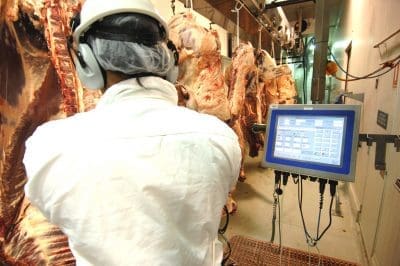Welfare of Cattle Kept for Beef Production
NINETEEN weeks into the 2022 slaughter season, and the beef industry is still searching for its first national weekly processing tally above 100,000 head.
While many had anticipated that national kills would have slipped well above six figures by this stage in the season, following a particularly quiet first quarter, persistent rain and flooding since the start of April across the eastern states have kept the handbrake firmly on processing operations.
 Add to that the challenges surrounding labour and COVID in processing plants, and logistics and transport issues including international port closures and shipping container access issues, and this year's first four months has been particularly challenging.
Add to that the challenges surrounding labour and COVID in processing plants, and logistics and transport issues including international port closures and shipping container access issues, and this year's first four months has been particularly challenging.
Roll back two years to the end of the drought cycle, and weekly slaughter during May 2020 was still averaging above 130,000 head. The year before that during the drought, weekly May kills were routinely above 160,000.
ABS official slaughter data released on Friday shows that Australian cattle slaughter in Q1 was 1.335 million head, a 5.8pc drop on the same quarter the previous year. Despite this, Australian beef production dropped only 2.5pc due to the heavier cattle weights (see below).
Most beef processing plants in Queensland skipped a day due to wet weather supply pressure again last week, and a number in central and northern parts of the state are again anticipating closures this week, as country takes time to dry out.
The good thing is that many processors have an ample quantity of 'backlog' slaughter stock to work through over the next few weeks. At least one large Queensland operator is not offering direct consignment quotes this week, saying it now has bookings well-covered until the week commencing 22 June.
Grid prices steady
Most other competitive operators in the Queensland market have kept rates unchanged again this week.
In southern Queensland, grids seen this morning have best offers for heavy grassfed four-tooth steer at 775c/kg (780c in one case for HGP-free, or 770c implanted), and 715-720c/kg for heavy slaughter cow. In southern states, best heavy cows are making 720c/kg this week, with heavy four-tooth PR steers around 790c – not far off Queensland rates.
Yardings are well back at many physical sales this week, despite many in Queensland being cancelled last week. Roma store sale this morning offered only 988 head, albeit double the offering produced last week. Warwick sale this morning doubled numbers to 988 head, after cancelling last week.
Overall NLRS numbers will be well down this week.
Livestock slaughter and production figures
Meanwhile the Australian Bureau of Statistics has released its official livestock slaughter and production figures for the first quarter of 2022.
In the three months to March, average carcase weights reached 324.4kg, 10.8kg heavier than at the same time last year.
According to Meat & Livestock Australia, this increase can be attributed to three key factors:
- High cattle prices, which are providing an economic incentive to producers and feedlots to grow cattle out to heavier weights.
- Improved seasonal conditions in southern Queensland and New South Wales, which have provided producers with abundant feed.
- Increased proportion of slaughter being sourced from the feedlot sector. In Q1 55pc of slaughtered cattle came from feedlots.
Notably, Queensland cattle averaged 336kg/head in the first quarter of 2022, the highest of any state and 12kg higher than the national average. Western Australian cattle were the lightest at 293.4kg/head, however, this is still considered a high weight for the state.
These high carcase weights are partially offsetting the drop in slaughter.
The ABS results show that Australian cattle slaughter in Q1 was 1.335 million head, a 5.8pc drop on the same quarter last year. Despite this, Australian beef production dropped only 2.5pc due to the heavier cattle weights.
The Female Slaughter Rate (FSR) which is technical indicator of whether the industry is in rebuild, currently sits at 41pc, the lowest rate since Q4 2011. This indicates that the national herd is still within a strong rebuilding phase.
- We'll come back and scrutinise the big changes in carcase weights being seen across Australia in a separate item later this week.
Source: https://www.beefcentral.com/processing/weekly-kill-first-quarter-production-back-almost-6pc-on-last-year/
0 Response to "Welfare of Cattle Kept for Beef Production"
Post a Comment